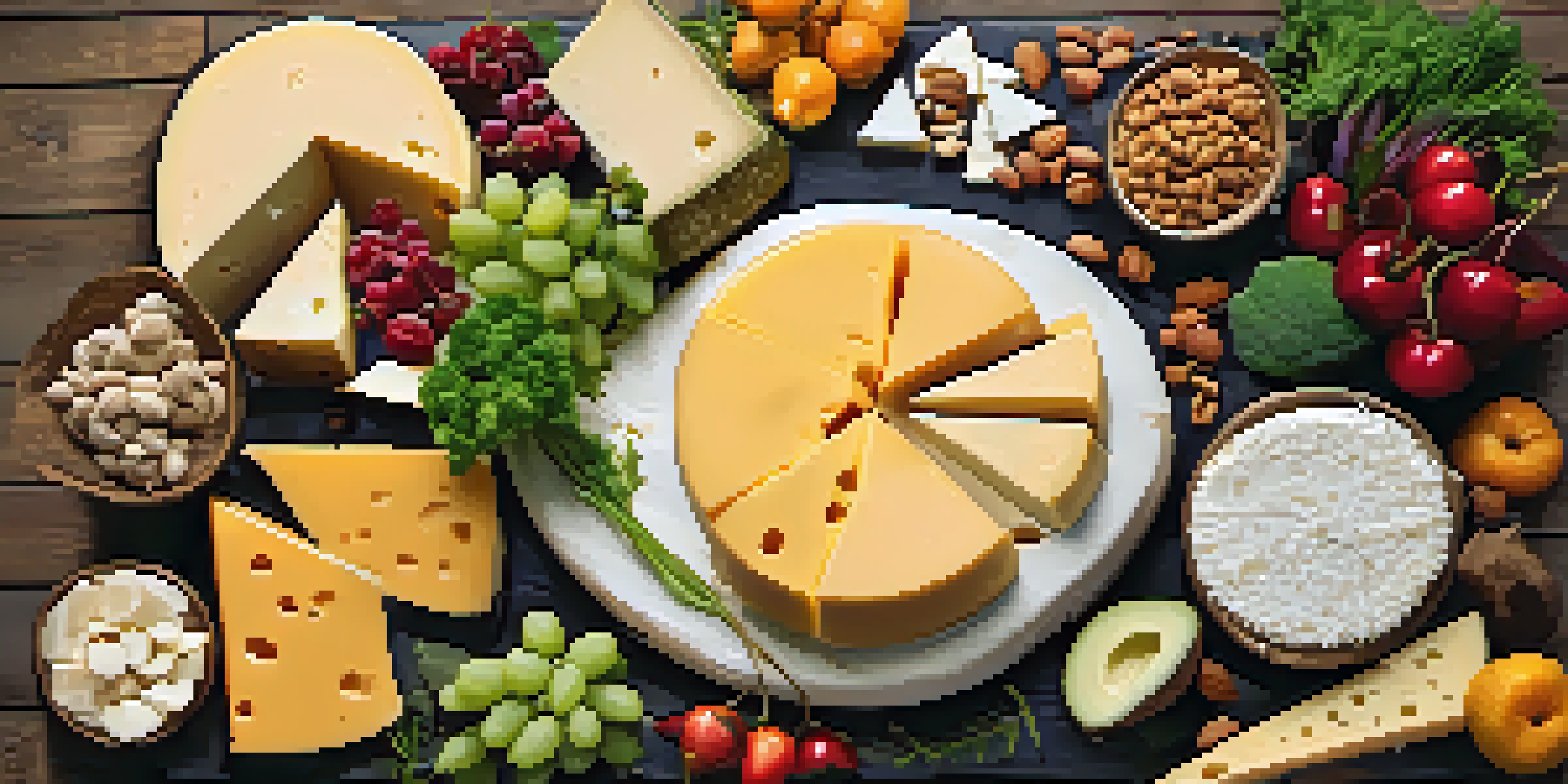How to Choose the Right Plant-Based Cheese for You

Understand Your Dietary Needs and Preferences
Before diving into the world of plant-based cheese, it's important to assess your dietary needs. Are you lactose intolerant, vegan, or simply looking to reduce dairy consumption? Knowing your reasons will guide your choices and help you find the best options that align with your lifestyle.
Let food be thy medicine and medicine be thy food.
Additionally, consider any allergies or sensitivities you may have. Some plant-based cheeses are made from nuts, soy, or gluten, which could trigger reactions in sensitive individuals. Always read labels carefully to ensure the cheese you choose is safe for you.
Lastly, think about your flavor preferences. Do you enjoy sharp, tangy flavors, or do you lean towards creamy and mild? Understanding what you like will make your plant-based cheese journey much more enjoyable.
Explore Different Base Ingredients for Cheese
Plant-based cheeses come from a variety of base ingredients, each offering distinct flavors and textures. Some common bases include nuts, soy, coconut, and even potatoes. For example, cashew-based cheeses are often creamy and rich, while almond-based options can be more crumbly.

If you're looking for a cheese that mimics traditional dairy closely, soy-based cheeses often do the trick. They melt well and have a flavor profile that many find appealing. On the other hand, if you're interested in something unique, consider cheeses made from fermented vegetables or legumes.
Understand Dietary Needs First
Assessing your dietary needs and preferences will guide you in choosing the right plant-based cheese options.
Exploring these different bases not only helps you find what you enjoy but also expands your culinary horizons. You might discover new favorites that you never expected!
Evaluate Texture and Melting Properties
Texture is a key factor when it comes to cheese, and plant-based varieties are no different. Some are creamy and spreadable, while others are firmer and sliceable. Think about how you plan to use the cheese—whether it's for spreading on crackers, topping a pizza, or adding to a salad.
The greatest wealth is health.
Melting properties can also vary widely between brands and types. If you're a fan of gooey, melted cheese on your favorite dishes, look for options specifically labeled as meltable. These often contain added starches or oils that help achieve that delicious, stretchy quality.
Don't hesitate to experiment! Trying different textures can lead you to discover the perfect cheese for every dish you create, and it can make your meals more exciting.
Consider Flavor Profiles and Seasonings
Flavor is where plant-based cheeses can really shine, offering a range of tastes from smoky to herby. Many brands infuse their cheeses with spices, herbs, or even nutritional yeast to deliver a satisfying flavor experience. Think about what dishes you enjoy and seek out cheeses that complement those flavors.
For instance, a smoky cheese can elevate a simple grilled vegetable dish, while a herbed cheese adds a fresh twist to pasta salads. If you love experimenting in the kitchen, consider unflavored options that you can season yourself.
Explore Diverse Cheese Bases
Different base ingredients like nuts, soy, and coconut offer unique flavors and textures in plant-based cheeses.
Don’t forget to check for added ingredients like salt or preservatives, as these can affect both health and taste. Choosing cheeses that align with your flavor preferences will enhance your meals and keep your palate happy.
Look for Nutritional Information
When selecting plant-based cheese, it's essential to examine the nutritional information. Some options can be high in calories, fats, or sodium, so understanding what you’re consuming is key to maintaining a balanced diet. Check for protein content as well, especially if you’re using cheese as a primary source of this nutrient.
It's also wise to look for vitamins and minerals that may be lacking in your diet. Many brands fortify their cheeses with nutrients like calcium and B12, which can be beneficial for those avoiding animal products.
Balancing taste with nutrition will help you choose cheeses that not only satisfy your cravings but also contribute positively to your overall health.
Read Reviews and Do Your Research
With so many options out there, reading reviews can be a game changer. Websites and social media platforms often have user-generated content where consumers share their experiences with different plant-based cheeses. This can give you insights into taste, texture, and overall satisfaction.
You can also follow plant-based food bloggers or influencers who often share recommendations and taste tests. Their opinions can guide you toward brands or products you might not have considered otherwise.
Experiment for Personal Favorites
Trying a variety of plant-based cheeses can help you discover new favorites and enhance your culinary experience.
Don't shy away from asking friends or family about their favorite brands, too. Personal recommendations can often lead you to hidden gems in the world of plant-based cheese.
Experiment and Find Your Favorites
Trying new plant-based cheeses is part of the fun! Don't be afraid to pick up a variety of brands and types to see which ones you enjoy most. It’s like a treasure hunt for your taste buds, allowing you to explore different flavors and textures.
Consider hosting a cheese tasting with friends or family. This not only makes the experience more enjoyable but also allows you to compare notes on what you like or dislike about each option.

Remember, your preferences may evolve over time, so keep an open mind and revisit your favorites regularly. You might find new loves along the way!
Utilize Plant-Based Cheese in Creative Recipes
Once you've found your favorite plant-based cheeses, the next step is to incorporate them into your meals! From pizza and pasta to salads and sandwiches, the possibilities are endless. You can even use these cheeses as a base for dips and spreads, making them versatile in various recipes.
For instance, try melting a plant-based cheese on a veggie burger for a delicious twist. Or, grate some over a warm pasta dish to add creaminess and flavor. The key is to be imaginative and think about how these cheeses can elevate your existing recipes.
Don't hesitate to mix and match different types of plant-based cheese in your cooking. Combining flavors and textures can lead to delightful culinary surprises that will impress your friends and family.